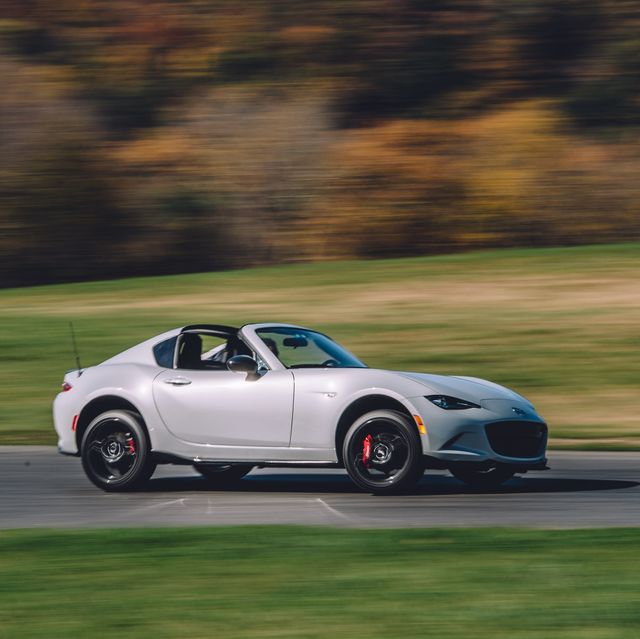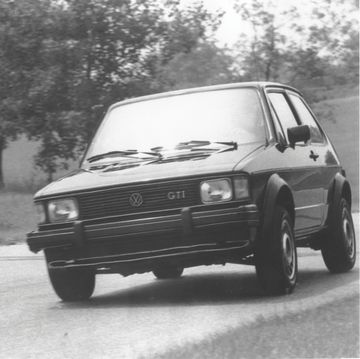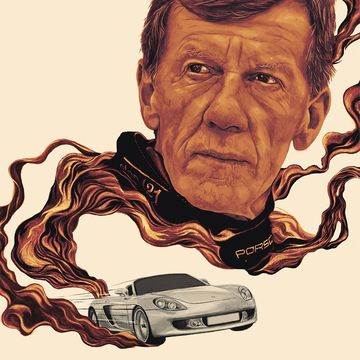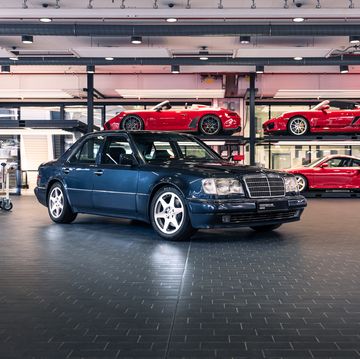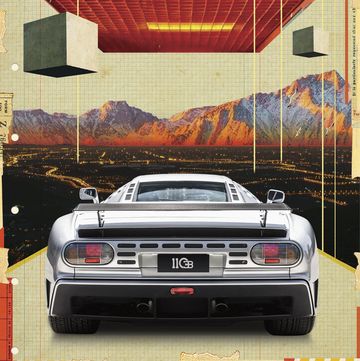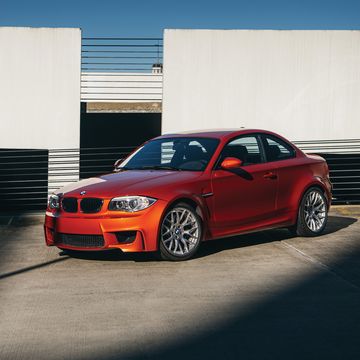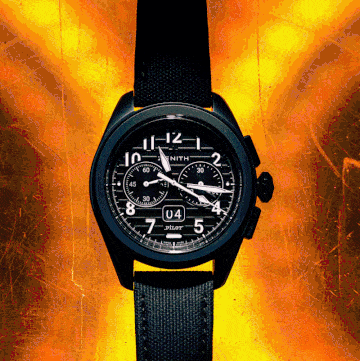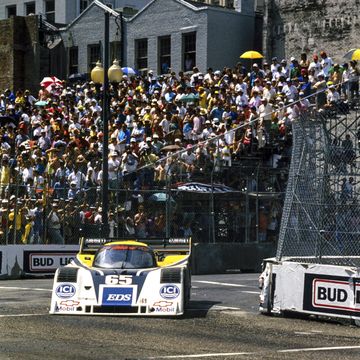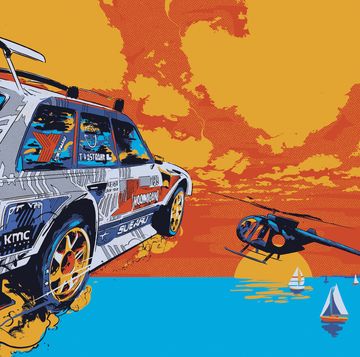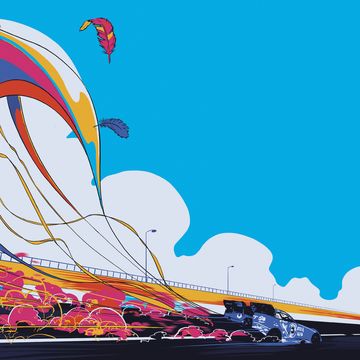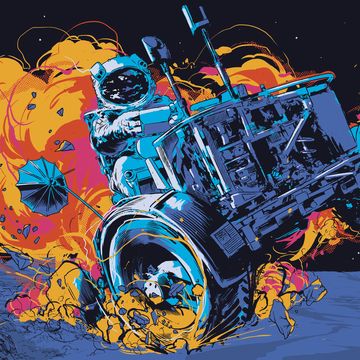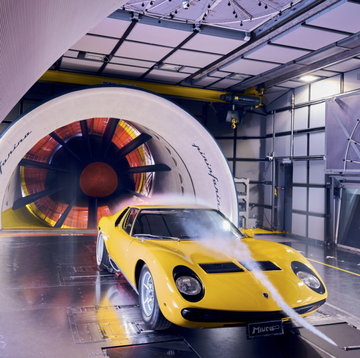The current Mazda Miata is unusual among modern sports cars in that it has a lot of body roll in cornering. Where most sports cars use stiff suspension to maximize grip, the Miata leans a bit in fast corners. Mazda tuned the Miata this way for a variety of reasons, including better ride comfort and more feedback in spirited driving. But for the 2022 MX-5, Mazda has found a way to reduce body roll without harming ride quality, accomplished in an incredibly clever way.
As with so many things in the automotive world, a carmaker's choice in anti-roll bars represents a compromise—in this case, between body roll and ride comfort. Stiffer bars give flatter, faster cornering, but ride quality suffers. Some high-end automakers use active anti-roll systems to offer the best of both worlds, though these are big, heavy, and expensive. The sort of thing you'd never see in a Miata.
So Mazda engineers invented a new system called Kinematic Posture Control (KPC), which uses braking to reduce body roll. Some cars, including the Mazda 3 hatchback, will lightly brake an inside wheel while cornering to create torque vectoring. KPC is different, though, as Mazda North America vehicle dynamics engineer Dave Coleman explains to R&T in an email.
"We are using a very slight amount of braking tuned to give a specific downward pull on the inside rear suspension," Coleman says. The ND-generation Miata has anti-squat rear suspension geometry. "When the rear wheel moves up and down, the rear suspension geometry is laid out to guide the wheel on a diagonal path, moving backward as it moves up," Coleman says. "So, if you pull up on the rear wheel, it will necessarily move backward a bit. The converse is also true. Pull backward on the rear wheel, and it will also have to move up. This is how the backward force from the brakes ends up exerting a little upward force on the wheel as it tries to follow that diagonal line."
The braking forces at play here are tiny. "We would have to use much stronger braking if we wanted a meaningful yaw response from the differential braking itself," Coleman explained. "Though physics dictates that any differential braking must produce some yaw moment, the amount of direct yaw response created by KPC here is too small for us to differentiate from background noise."
Specifically, Coleman explained that KPC applies a maximum of 45 psi of braking pressure to the inside rear brake; Coleman says that a typical a brake-torque vectoring system applies a minimum of about 450 psi of braking pressure to a single wheel.
Coleman tells us that KPC is not activated by driver input the way brake-based torque vectoring would be. KPC is instead triggered when it senses the difference in speed between the two rear wheels while rounding a curve."This little software trick behaves as if it were just a mechanical characteristic of the chassis," Coleman says. "We're basically tricking the rear suspension into doing something it couldn't do through geometry alone."
Subtle software tweaks aimed at improved dynamics are becoming a Mazda hallmark. A few years back, Mazda introduced G Vectoring Control, which briefly reduces engine torque during turn-in to create a tiny moment of deceleration, triggering weight transfer to the front tires to improve cornering grip and response. The fraction-of-a-second deceleration happens automatically and it's totally imperceptible from the driver's seat, but as we showed in 2016, the effect is measurable in cornering forces.
A few years ago, Coleman once told this reporter that it's important for a Miata to ride well. The way Coleman put it, "good roads are often bad roads"—the most winding, remote routes are often the most poorly paved. You can't enjoy this kind of driving in a car that's too stiff to bear.
KPC is ingenious in that it cuts down on body roll without spoiling the ride. It also involves no additional hardware, which is crucial in a lightweight, affordable Miata. Naturally, we can't wait to try it ourselves.
A car enthusiast since childhood, Chris Perkins served as Road & Track's engineering nerd and Porsche apologist.
